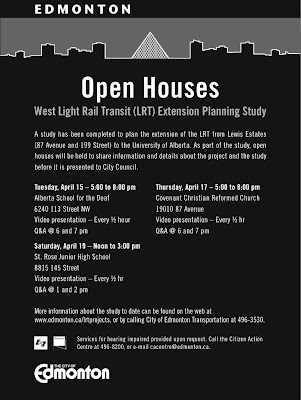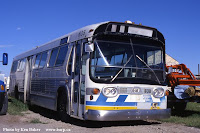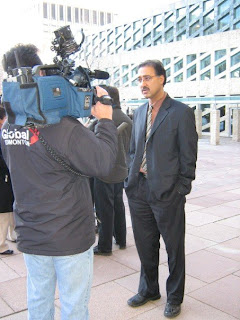Let us all take a magical journey down to a sunny day less than a year ago. July 28 to be exact.
The bright yellow sun filled Alberta’s big blue sky and everything was right. Construction cranes filled the skylines of our cities as our captains of free enterprise filled their Hummers and Beamers with premium gasoline before driving their merry way to Calgary’s International or Edmonton’s City Centre airport to fly their private jets to a Las Vegas vacation or to their Okanagan hideaway. While they may have lost countless nights of sleep to nightmares of Pierre Trudeau’s poltergeist, they were warmed with by the thoughts of Stephen Harper warmly embracing soon-to-be United States President John McCain. Liberals and Socialists complained, but oil was aplenty and times were good.
Even better were the expected resource revenue surpluses in Alberta, which predicted to be larger than expected. That glorious summer, Finance Minister Iris Evans predicted a surplus of $8.5 billion, based on a estimate of $119.25 per barrel of Oil. Trumpeting the wonderful news, a Government press release announced the creation of two new funds that would come from the significantly larger than expected surplus.
Our glorious leader, Premier Ed Stelmach, had decided in his growing benevolence that he would bestow upon Albertans two generous monetary funds. The large sums of money that would fill these funds would help fulfill the dreams of millions of citizens, and make Wild Rose Country a better place to live. Times were good and people were proud.
For those who held the energy industry dear, $2 billion was dedicated to the creation and development of Carbon Capture Storage technology. If developed, CCS technology would allow companies to capture C02 and pump it deep into the cavernous underground of our Earth before it could reach the atmosphere.
For Albertans who held our urban centers dear, a second $2 billion fund was created to support innovative public transportation to connect Albertans both in- and outside of our growing cities. The Ministry of Municipal Affairs boasted that this Green Trip Fund would ‘promote the use of local, regional and inter-city public transit and will support new public transit alternatives throughout the province, significantly reducing the number of vehicles on Alberta roads and reduce greenhouse gas emission.’ A noble cause indeed. Alberta was getting smart with its approach to urban growth, and was backing their approach with serious money.
Times were good.
But, less than one year later, the fate of these two sister funds could not be more different.
Times were bad.
Alberta’s bright blue skies remained, but as the winter thaw began, there were less construction cranes on the horizon, a son of Pierre Trudeau had returned to haunt us, a bleak future predicted an extra ten to twenty minute drive for our captains of industry to reach their private jets, Barack Obama was President of the United States, and Megan McCain had signed a major book deal. And despite the tough economic times, Liberals and Socialists continued to complain.
The short trip down green public transit lane ended as unceremoniously and abruptly as a flock of duck landing in a tailing pond, when a much less jubilant Finance Minister Evans unveiled a $4.5 billion dollar deficit. Evans declared that “Just as you do in a family, you see that your revenues aren’t going to be there, then you reduce your spending, and you try to look at other ways to make the dollar stretch. That will definitely happen here in Alberta.” Accordingly, the $2 billion Green Trip Fund was cut down to a mere $10 million in 2009 and $520 million over the following three years, creating an uncertain future for public transit development in Alberta’s major cities. Alberta’s growing cities were left far behind their counterparts across the land.
Yet, the billions for Carbon Capture Storage remained largely intact as $100 million were allocated for 2009 and the remaining $1.9 billion over the following years. Even as major companies such as Suncor, Syncrude, and ConocoPhillips withdrew their plans for to bid for Carbon Capture funding and critics warned of boondogglery ahead, Premier Stelmach pushed ahead with his Carbon Capture dream, convinced that the undeveloped and unproven technology was the key to greening the sandy shores of Alberta’s vast Energy Beach.
So strong was his belief in the unproven Carbon Capture dream, that Premier Stelmach was willing to go much further than simply abandoning his promise to fund a proven public transit strategy that would actually remove vehicles (and carbon) from the roads of Alberta’s cities. He was willing to break his promise to never again to put Alberta into a deficit position.
As Premier Stelmach quietly removed the anti-deficit emblem that had adorned the lapel of his suit jacket for fifteen years, it became apparent that the anti-deficit legacy was just as dead as the legacy of the $2 billion Green Trip Fund.
As our magical journey comes to an end, it appears that the mere daydream of a warm breeze in an uncertain and unproven carbon captured future may have been all it took for the these two $2 billion funds to meet two very different ends.









